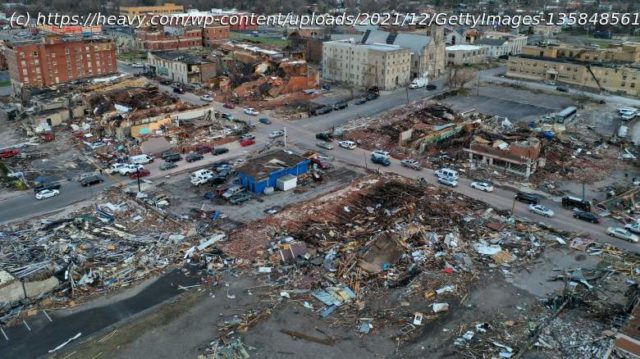Climate models can’t see tornadoes, but they can recognize the conditions for tornadoes to form. An atmospheric scientist explains what that means for forecasting future risks.
Scott Olson/Getty An aerial view of homes and business destroyed by a tornado on December 11,2021 in Mayfield, Kentucky. The deadly tornado outbreak that tore through communities from Arkansas to Illinois on the night of Dec.10-11,2021, was so unusual in its duration and strength, particularly for December, that a lot of people including the U.S. president are asking what role climate change might have played – and whether tornadoes will become more common in a warming world. Both questions are easier asked than answered, but research is offering new clues. I’m an atmospheric scientist who studies severe convective storms like tornadoes and the influences of climate change. Here’s what scientific research shows so far. To understand how rising global temperatures will affect the climate in the future, scientists use complex computer models that characterize the whole Earth system, from the Sun’s energy streaming in to how the soil responds and everything in between, year to year and season to season. These models solve millions of equations on a global scale. Each calculation adds up, requiring far more computing power than a desktop computer can handle. To project how Earth’s climate will change through the end of the century, we currently have to use a broad scale. Think of it like the zoom function on a camera looking at a distant mountain. You can see the forest, but individual trees are harder to make out, and a pine cone in one of those trees is too tiny to see even when you blow up the image. With climate models, the smaller the object, the harder it is to see. Tornadoes and the severe storms that create them are far below the typical scale that climate models can predict. What we can do instead is look at the large-scale ingredients that make conditions ripe for tornadoes to form.
Домой
United States
USA — Art Tornadoes & Climate Change: What a Warming World Means for Deadly Twisters






